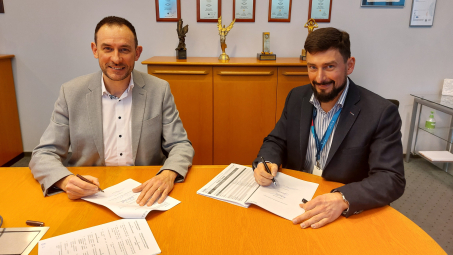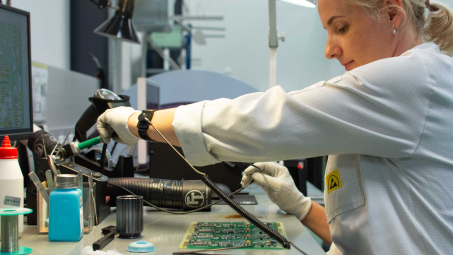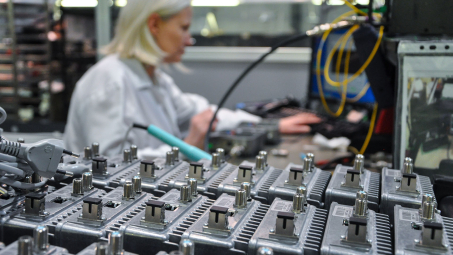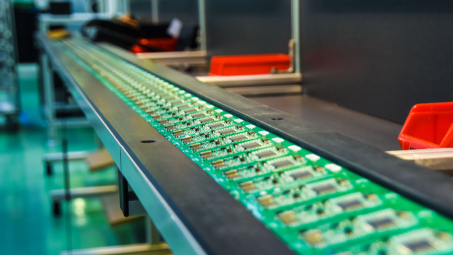Process in the electronics industry - three musts which make it agile
What does it mean that an organization's tasks flow down in a well-thought-through process right to their completion? Is it still a hard-and-fast fossilized thing of the past - a management dodo? Or sort of a business prism which casts the full picture of where the organization goes? Then it is nothing like a fossil but a map. And, putting the first steps in the unknown business endeavor, you would incline to join rather the man with a map than the one without it... In the electronic devices industry, the process - the perfect map - takes three features which will make it not inflexible, but agile.

None of us, surely, has ever found any processes or procedures in the
sack of the agile manifesto hints. On the contrary, the balance moves to the
opposite – no processes, no procedures. What if, however, the process does not
make tasks run in the road ruts but is the aforementioned map with all the matched
difficult places that might impede the work and the real estimation of how long
the whole project can take? In the electronics industry specifically, where the
technology is changing very fast, the process foresees trouble and makes it always
resolvable.
If you already made it to ask yourself when you are supposed to know which process assures you of the above and which does not, take a look at the three musts of any viable process.
1. The process lives
Not like ivy spreading freely over the forest duff to make things
hard-and-fast in the end, but like the map of this forest. You do not take your
map on the journey to carry it in the backpack all along, but you make use of
it any moment a crossroad comes your way.
The process in an organization has to be useful in the same way. It
cannot be created for the sake of neat and nice reports. It gets its ultimate
shape from the people and their methodology of work.
A good process does not happen to be a chore - a mundane one, moreover -
but the answer to the question: "What am I supposed to do now?"
A perfect process remains flexible, which is a must in such a changing
environment like the electronics.
There are, of course, tens of different project management approaches, but the final choice should be made with keeping the nature of the business and its requirements in mind. Out of all the methods, traditional – like Waterfall – and agile methodologies are often pitted against each other.
In reality, there is no one-size-fits-all methodology. The choice to
implement a methodology largely depends on factors such as the nature of the
project, size or resources.
Most of the time, smart project managers decide which methodology to
adopt during the beginning or initiation of a project.
2. Process continuous improvement
It is a never-ending story, but in a good way. Could we manage the
things today as they were ten or more years ago? Automation and digitalization
have speeded up the spinning of the planet and with it the processes - and no
doubt the processes working in the new technologies had also to stir the
rotation up.
Why? Not only to keep up with the pace of the world, but also to expand
the area the company operates on. In other words, to let the company grow.
Process allows to enter new markets and with it to gain more branched-out
experience. An attentive process lets do it even when the market heats up.
A company might support continuous transformation with the simple Deming
cycle: Plan, Do, Check, Act; a scheme which in a systematic consequence tends
to acquire more complex projects for the company. And if the company had
repeated this process a few of times, looked at the parameters it had been
measuring the performance with, it should now become swift in implementing the
process in the new projects.
Next, implementing any process entails unavoidably its modularity. And
modularity leaves space for the client to choose their own way - to skip or add
a stage, or to combine two processes into still viable one.
When the market changes, along with the people and their customs, the
process of designing or manufacturing must remain reacting. Staying blind to
the outside cues and sticking to the processes for the sake of the process is
the thing of the past.
3. The process makes us want to identify with it
All about a good process has nothing in common with the company's
politics. Straining people's patience to bend their resistance to accepting the
process is the last thing you would like to do.
They need to identify with it. When they see procedures, they should see
good time management, time sparing, agility and logic.
When it comes to the company side, the company knows that through the
process it can communicate with the clients. Such a company has an argument to
assure of its transparency and that the phases in the project realization
happen in the time frames and there is a concrete output at the end of each
phase.
For the client, though, the process informs them how they can fulfill their
needs. How long did it take to market the end product and how should the
client's company plan product realization in accordance to the whole? Auditing
is, besides all, what clients like. And let us say it clear: they will have
better sleep with the knowledge about where exactly project realization happens
to be - on which stage. This knowledge is the first step in the risk
management, so having a process for the client is their safety.
For the employees, the process brings peace of mind. Of course, a badly
designed process feels like pain when you have to report things "just
because". The process cannot hamper work. It has to be flexible. It must
be the map, not the gutter, for the workflow. If it slows down tasks, creates
piles of never-read documents or seems too complicated to keep up with the
increment, it may drain life from the people who work with it. And as the agile
manifesto reminds: people are of the greatest value; let it then stay that way.
The process in the new technologies
Difficult and challenging as the project might be, agile process will
protect its realization. This is the map with all the routes shown.
"First goes
the team – responsible
and conscious, and ready to make decisions. A committed team with strong leaders is the
key to the success. Then, our ability to respond to a change that is forced by
the volatility of the contemporary business environment. Thanks to being agile,
we can manage that and
move on to the next phase.
At the end of the day,
the role of the process is to support the end product successful development
and trust of all the parties: the customer, supplier and employee," advises Joanna Marzec, Value Chain Director
at VECTOR BLUE HUB.
At VECTOR BLUE HUB we support the process growth on the Deming cycle and let our work become proactive. Modularity of the phases and milestones brings the value of flexibility when it is needed to be suited to the client's work standards. You are welcome to contact us to learn something more about how we work and why it is so valuable to realize electronic devices design and manufacturing projects according to our special process.








